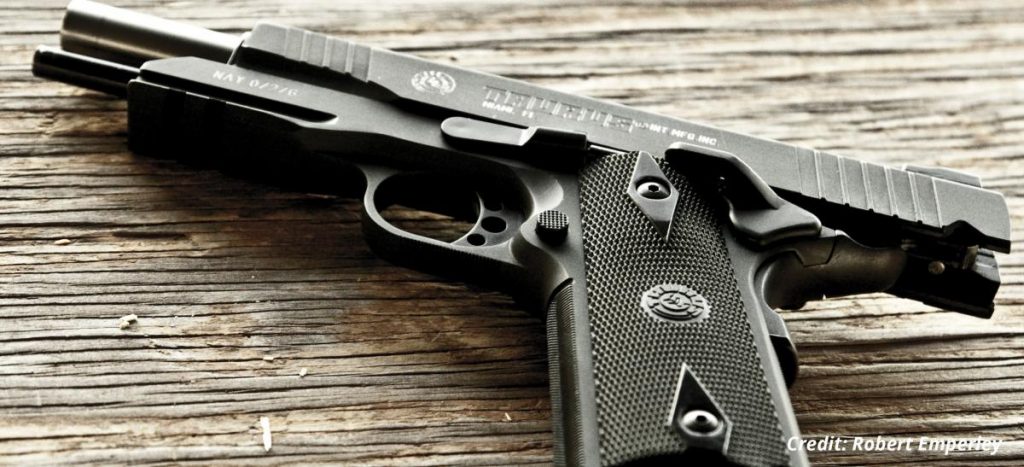For households with children, alcohol misuse and unsafely stored firearms can be a dangerous mix

In Washington State, there are an estimated 470,000 children under 18 living in a firearm-owning household. Among them, over half live in a household with an unsafely-stored (not locked and unloaded) firearm.
For children living with an adult who misuses alcohol, there may be an increased risk of self-harm, unintentional injury, or interpersonal violence. Considering these risks, researchers at the University of Washington, the Harborview Injury Prevention and Research Center and the Injury and Violence Prevention Unit in Seattle and King County investigated firearm storage among gun-owning households.
This study, which was the first of its kind to investigate this association at a statewide level, was published Monday in JAMA Pediatrics. In the study, researchers looked at Washington State BRFSS survey data from 2013 and 2016. The 5,530 participants were asked questions regarding firearm ownership and storage practices through a four-question module after answering questions on alcohol consumption and sociodemographic characteristics about a child in their household.
In firearm-owning households, 67 percent of children living with an adult who misused alcohol were exposed to at least one unsafely-stored firearm, compared with 51 percent of children living with an adult who reported no alcohol misuse.
“This research indicates the need for improved firearm storage in homes with children,” said Erin Morgan, lead author and doctoral student in the Department of Epidemiology at the UW School of Public Health. “Sixteen percent of youth under the age of 18 in Washington State live in a home where a firearm is stored in a way other than locked and unloaded. Kids who live in a household with an adult who misuses alcohol are more likely to live with an unsafely stored firearm; given that these children may already be at heightened risk for injury, this can be a dangerous combination.”
According to prior research, young people are at a vulnerable age for self-inflicted and interpersonal violence, such as suicide and bullying. These factors may be exacerbated by alcohol use among parents or guardians.
“Children living with an adult who misuses alcohol are more likely to end up in the ER with an unintentional injury,” Morgan said. “They are also at higher risk for involvement in bullying, which has implications for the risk of self-harm or interpersonal violence. If these kids are already at increased risk for injury, making lethal means less accessible is crucial.”
The primary step for decreasing chances of injury is to safely store—lock and unload—household firearms. For Morgan and her colleagues, there is more that can be done on a community-level through safe-storage messaging.
“There are a number of different ways to message and improve safe storage,” Morgan said. “For some people, conversations in a doctor’s office will be helpful, but for others, media that helps normalize conversations about storage and encourages parents to lock up guns may be a better approach. Community programs that give away safe storage devices are also helpful. I don’t think that one method will be the solution—improving safe storage will be a team effort.”
Contributing authors of the study were Ali Rowhani-Rahbar, the Bartley Dobb Professor for the Study and Prevention of Violence and associate professor at the UW Department of Epidemiology, Anthony Gomez, Manager of the Violence and Injury Prevention Unit at Public Health Seattle and King County, and Frederick Rivara, Professor and Vice Chair of Academic Affairs at the UW Department of Pediatrics. The study was funded in part by the Grandmothers Against Gun Violence.